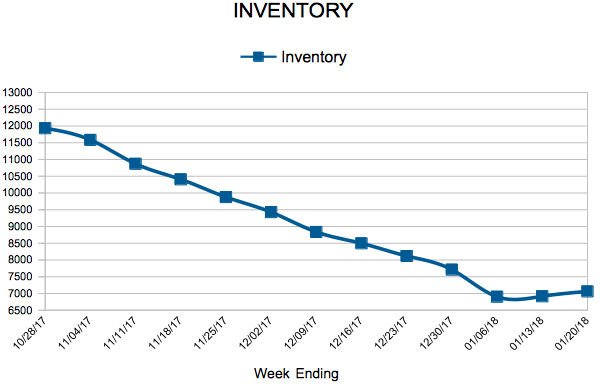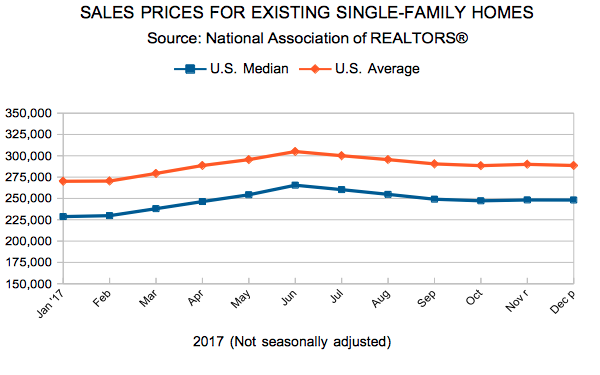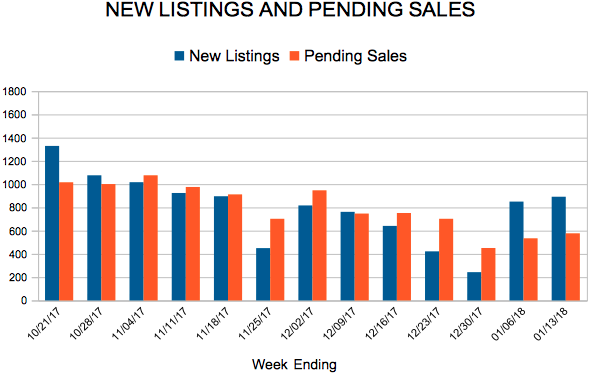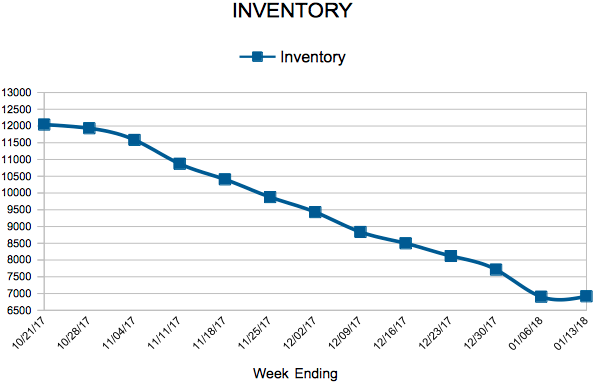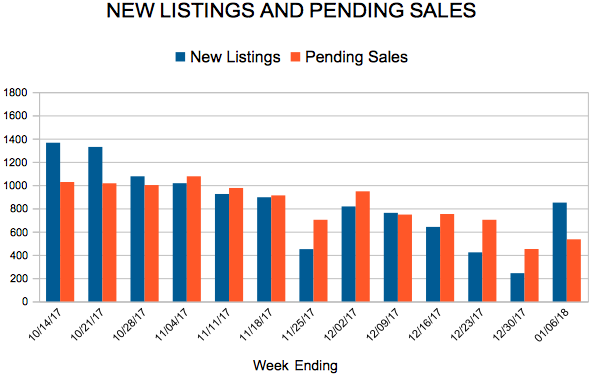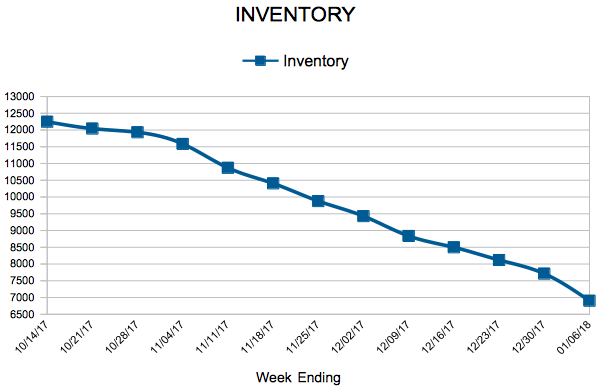Monthly Archives: January 2018
Inventory
Mortgage Rates Jump Again

Rates keep climbing. The 10-year Treasury yield reached its highest point since 2014 reflecting expectations of broad-based economic growth. Mortgage rates, in turn, followed the surge in Treasury yields. The 30-year fixed rate mortgage jumped 11 basis points to 4.15 percent, its highest level since March of last year.
The release of the December existing home sales data confirms that 2017 was the best year for home sales in over a decade. Will 2018 home sales outpace 2017? Homebuyer affordability will be a challenge, with mortgage rates moving higher and robust house price gains across the country. The FHFA reported that house prices increased 6.5 percent from November 2016 to November 2017, with all regions showing positive 12-month changes.
Existing Home Sales
New Listings and Pending Sales
Inventory
Mortgage Rates Move Higher For Second Consecutive Week

The U.S. weekly average for the 30-year fixed mortgage rate rose above 4 percent for the first time since last summer to 4.04 percent in this week’s survey. This is the highest weekly average for the 30-year fixed rate mortgage since May of 2017. Inflation is firming, the Federal Reserve’s Beige Book indicates broad-based economic growth and labor markets are tightening. This means upward pressure on long-term rates, like the 30-year fixed-rate mortgage, is building.
New Listings and Pending Sales
Inventory
Mortgage Rates Bounce Back Up
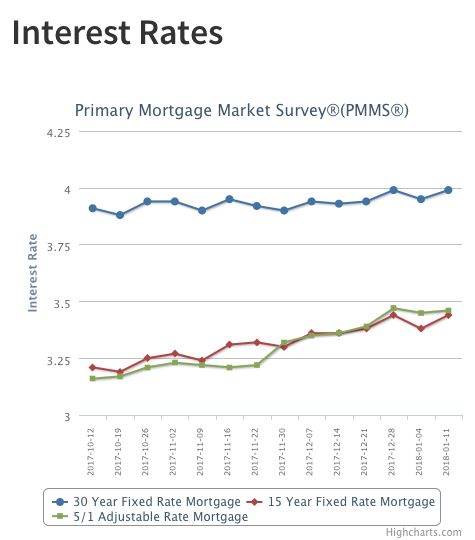
After dipping slightly last week, Treasury yields surged this week amidst sell-offs in the bond market. The 10-year Treasury yield, for instance, reached its highest point since March of last year. Mortgage rates followed Treasury yields and ticked up modestly across the board. The 30-year fixed-rate mortgage averaged 3.99 percent, up 4 basis points from a week ago.


